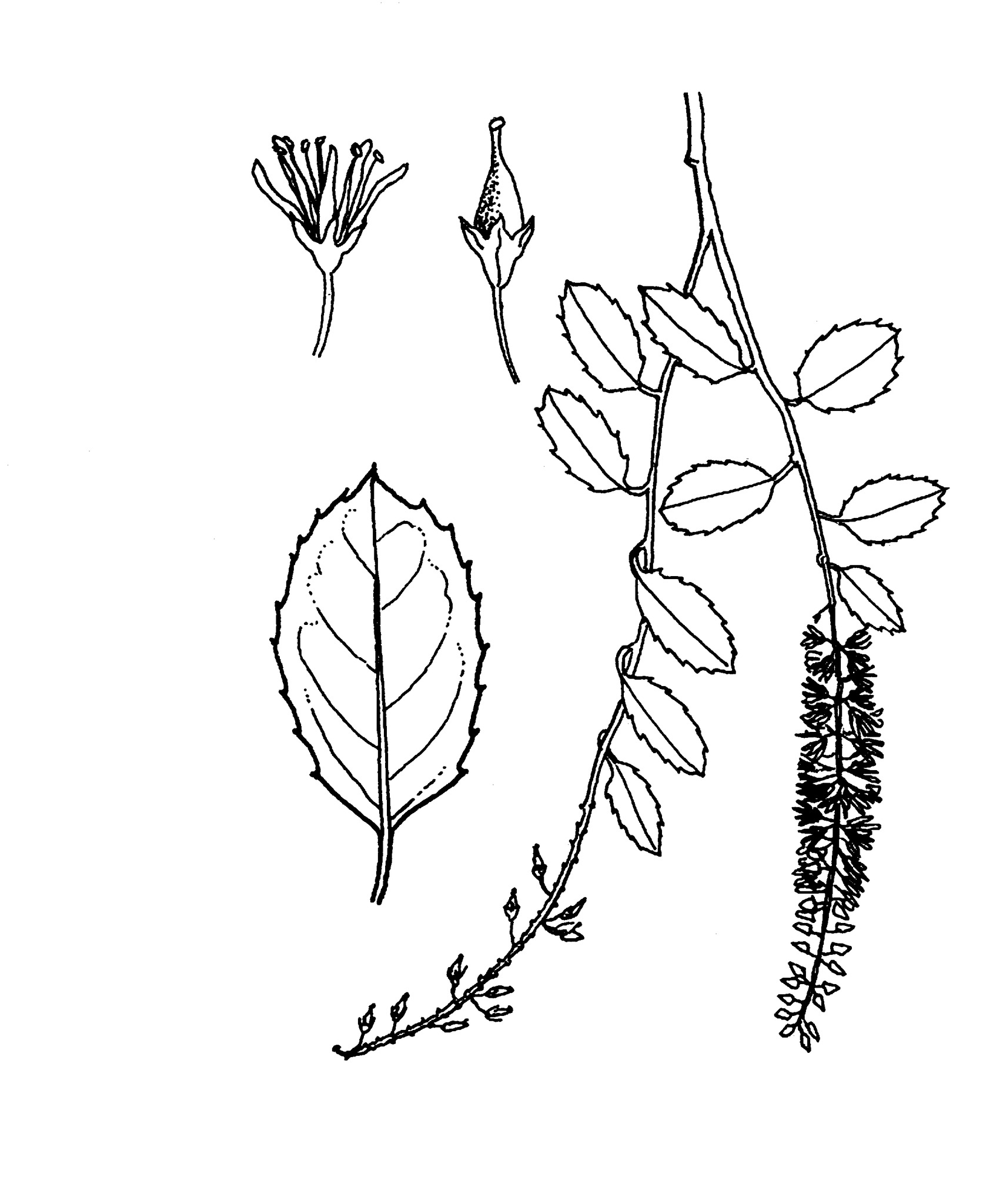
Greek itea — willow, referring to the similarity of the leaves of I. virginica to those of the willow.
Deciduous or evergreen trees or shrubs, the branches with chambered pith. Leaves alternate, entire or toothed; stipules absent. Flower clusters terminal or axillary, in racemes or spikes. Flowers bisexual, small, regular. Flower parts in 5s, the petals linear. Ovary superior, 2-chambered; styles 2, united. Fruit a mostly 5-valved capsule containing many flattened seeds.
Sometimes included in the Saxifragaceae or Grossulariaceae.
Grown for the ornamental leaves and long catkin-like clusters of flowers.
About 10 species from N America and Asia.
Seed, softwood and semi-hardwood cuttings, occasionally by division or air layers.
Petals curved inwards at the tip; ovary superior.
Source: (2002). Grossulariaceae. In: . Horticultural Flora of South-eastern Australia. Volume 3. Flowering plants. Dicotyledons. Part 2. The identification of garden and cultivated plants. University of New South Wales Press.
